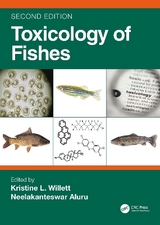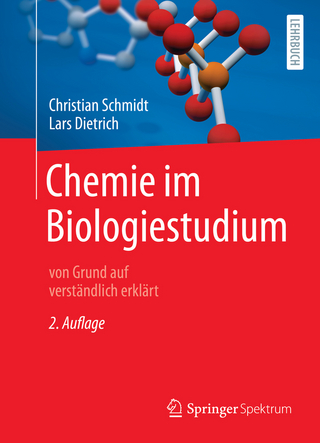
The Toxicology of Fishes
Seiten
2008
CRC Press (Verlag)
978-0-415-24868-6 (ISBN)
CRC Press (Verlag)
978-0-415-24868-6 (ISBN)
- Titel erscheint in neuer Auflage
- Artikel merken
Zu diesem Artikel existiert eine Nachauflage
A monograph concerning the interactions of chemical contaminants with freshwater and marine fishes. It includes discussions of critical general principles, such as bioaccumulation, toxicokinetics, biotransformations, mechanisms of toxic action, and adaptations to chemical stress and target systems of fishes, such as liver, kidney, and gills.
When looking for a book on fish toxicology, you might find one that discusses the biochemical and molecular aspects, or one that focuses aquatic toxicology in general. You can find resources that cover human and animal toxicology or ecotoxicology in general, but no up-to-date, comprehensive monograph devoted to the effects of chemical pollution on these organisms has been widely available, until now. Filling this void, The Toxicology of Fishes, written by recognized experts, covers toxic responses ranging from reduced reproduction and/or abnormal development, growth, and differentiation.
General Principles — Discusses fundamental topics such as the bioavailability of chemicals present in the aquatic environment to fishes, processes governing chemical distribution within these organisms, how fish metabolize organic chemicals, and fundamental mechanisms of chemical toxicity
Key Target Systems and Organismal Effects — Describes key target organ systems for chemical impacts in fish, how chemicals produce cancer in these animals, and how fishes can develop resistance to chemical toxicity
Methodologies and Applications — Dovers methods for the assessment of chemical effects on fish such as toxicity tests, biomarkers, simulated ecosystems, and modeling approaches and the use of data from such studies in ecological risk assessments
Case Studies — Provides examples of how the principles and approaches presented in earlier units are actually deployed in studies
Illustrated by case studies of actual, large-scale field investigations, the book reviews the tools used to assess unwanted effects in laboratory model- and wild fish in detail. With 238 illustrations, 70 tables, and 50 equations, this comprehensive monograph presents detailed information on the boiavailability of chemical pollutants, their distribution, metabolism, and excretion in the host fish and mechanisms and sites of toxic responses.
When looking for a book on fish toxicology, you might find one that discusses the biochemical and molecular aspects, or one that focuses aquatic toxicology in general. You can find resources that cover human and animal toxicology or ecotoxicology in general, but no up-to-date, comprehensive monograph devoted to the effects of chemical pollution on these organisms has been widely available, until now. Filling this void, The Toxicology of Fishes, written by recognized experts, covers toxic responses ranging from reduced reproduction and/or abnormal development, growth, and differentiation.
General Principles — Discusses fundamental topics such as the bioavailability of chemicals present in the aquatic environment to fishes, processes governing chemical distribution within these organisms, how fish metabolize organic chemicals, and fundamental mechanisms of chemical toxicity
Key Target Systems and Organismal Effects — Describes key target organ systems for chemical impacts in fish, how chemicals produce cancer in these animals, and how fishes can develop resistance to chemical toxicity
Methodologies and Applications — Dovers methods for the assessment of chemical effects on fish such as toxicity tests, biomarkers, simulated ecosystems, and modeling approaches and the use of data from such studies in ecological risk assessments
Case Studies — Provides examples of how the principles and approaches presented in earlier units are actually deployed in studies
Illustrated by case studies of actual, large-scale field investigations, the book reviews the tools used to assess unwanted effects in laboratory model- and wild fish in detail. With 238 illustrations, 70 tables, and 50 equations, this comprehensive monograph presents detailed information on the boiavailability of chemical pollutants, their distribution, metabolism, and excretion in the host fish and mechanisms and sites of toxic responses.
Richard T. Di Giulio, David E. Hinton
General Principles. Key Target Systems. Methodologies and Applications. Case Studies.
| Erscheint lt. Verlag | 25.2.2008 |
|---|---|
| Zusatzinfo | 70 Tables, black and white; 35 Halftones, black and white; 238 Illustrations, black and white |
| Verlagsort | London |
| Sprache | englisch |
| Maße | 178 x 254 mm |
| Gewicht | 2154 g |
| Themenwelt | Naturwissenschaften ► Biologie ► Biochemie |
| Naturwissenschaften ► Biologie ► Zoologie | |
| ISBN-10 | 0-415-24868-X / 041524868X |
| ISBN-13 | 978-0-415-24868-6 / 9780415248686 |
| Zustand | Neuware |
| Informationen gemäß Produktsicherheitsverordnung (GPSR) | |
| Haben Sie eine Frage zum Produkt? |
Mehr entdecken
aus dem Bereich
aus dem Bereich
von Grund auf verständlich erklärt
Buch | Softcover (2022)
Springer Spektrum (Verlag)
34,99 €



